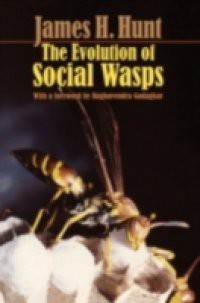Social behavior occurs in some of the smallest animals as well as some the largest, and the transition from solitary life to sociality is an unsolved evolutionary mystery. In The Evolution of Social Wasps, James H. Hunt examines social behavior in a single lineage of insects, wasps of the family Vespidae. He presents empirical knowledge of social wasps from two approaches, one that focuses on phylogeny and life history and one that focuses on individual ontogeny, colony development, and population dynamics. He also provides an extensive summary of the existing literature while demonstrating how it can be clouded by theory. Hunts fresh approach to the conflicting literature on sociality highlights how oft repeated models can become fixed in the thinking of the scientific community. Instead, Hunt presents a mechanistic scenario for the evolution of sociality in wasps that changes our perspective on kin selection, the paradigm that has dominated thinking about social evolution since the 1970s. This innovative new model integrates life history, nutrition, fitness and ecology in which social insect biologists will find a rich storehouse of ideas and information, and behavioral ecologists will find a bracing challenge to long accepted models. Engagingly written, bold, and provocative, The Evolution of Social Wasps marks a milestone in our understanding of one of lifes major evolutionary transitions - the origin of social behavior.

